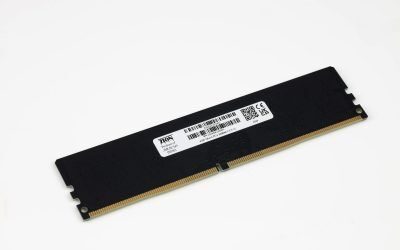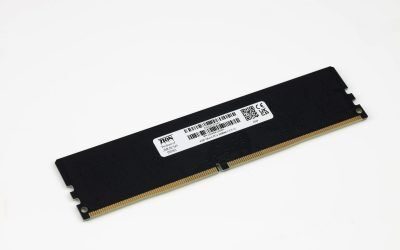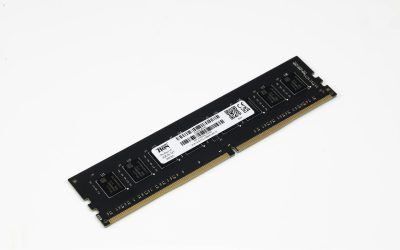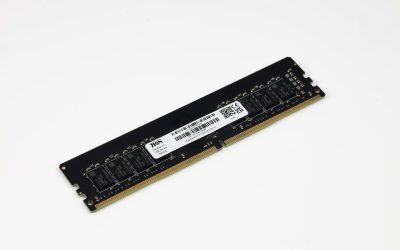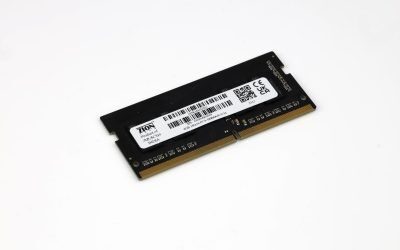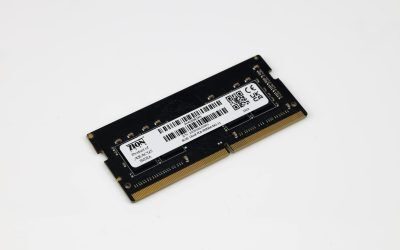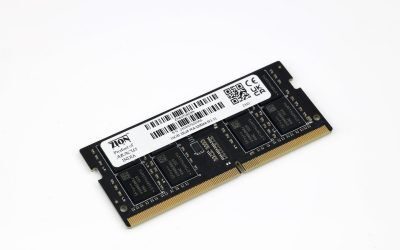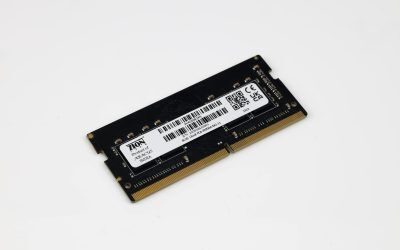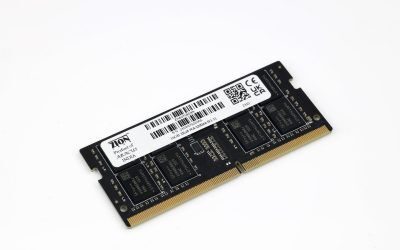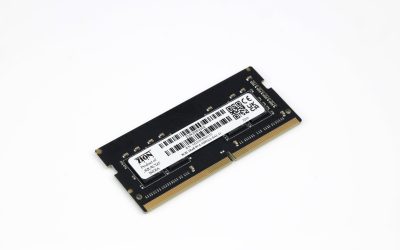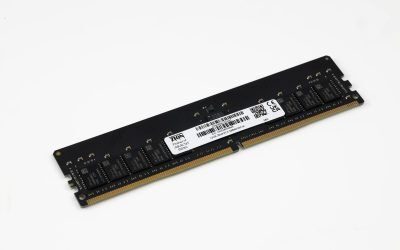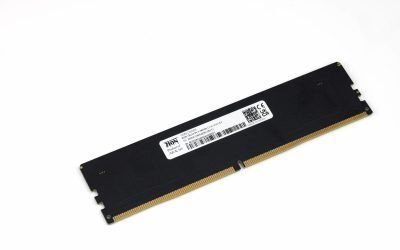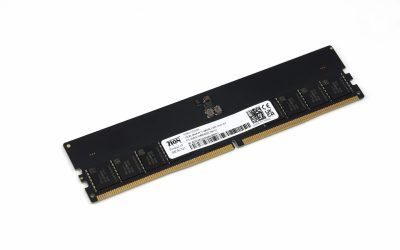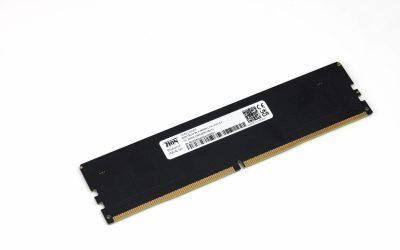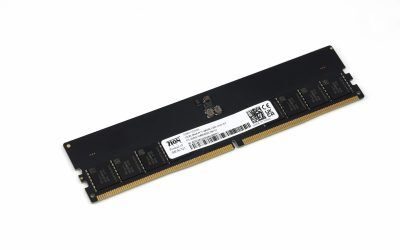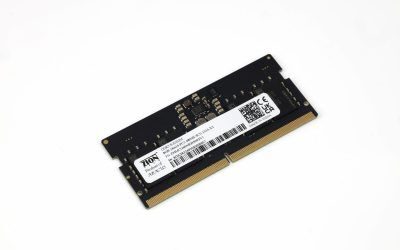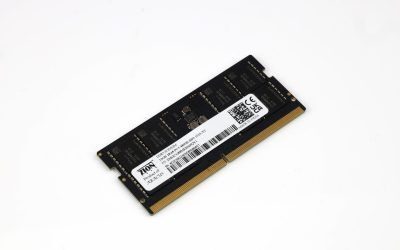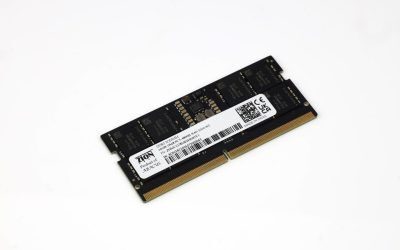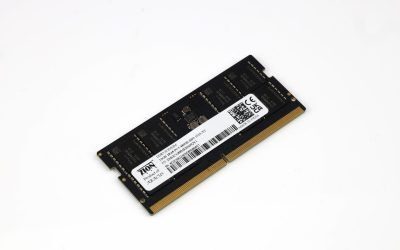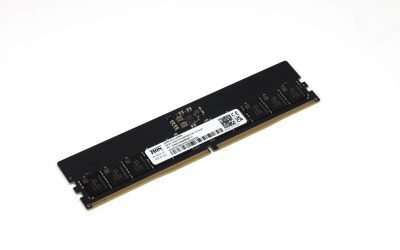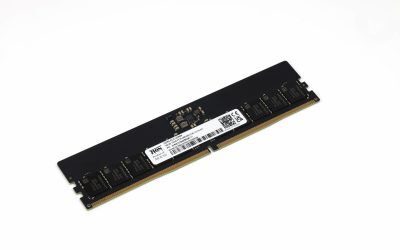EDO (Extended Data Out) memory was introduced in 1995 as a successor to Fast Page Mode (FPM) memory. It was the first memory type to allow the CPU to access data while still waiting for the previous data to be transferred. This was achieved by keeping the data bus active during the read cycle, which allowed the CPU to fetch the next piece of data without waiting for the current data transfer to finish.
DDR (Double Data Rate) memory was introduced in 2000 as the successor to SDRAM. DDR memory uses a technique called “double pumping” to transfer data twice per clock cycle, effectively doubling the memory’s data transfer rate. This allowed for faster data transfer speeds and better system performance compared to SDRAM.
Today, DDR memory is the most common type of memory used in computers and other electronic devices, with DDR5 being the latest iteration.
DDR4 Desktops
8GB DDR4 PC3200 UBDIMM
- Part No : ZH4G6U8EXN
- Memory Type : DDR4
- Form Factor : UDIMM
- Capacity : 8GB
- Speed : 3200
- CAS Latencies : 22
- Operating Voltage : 1.2V
- Operating temperature : 0 to +85°C
16GB DDR4 PC3200 UBDIMM
- Part No : ZH4G7U8EXN
- Memory Type : DDR4
- Form Factor : UDIMM
- Capacity : 16GB
- Speed : 3200
- CAS Latencies : 22
- Operating Voltage : 1.2V
- Operating temperature : 0 to +85°C
8GB DDR4 PC3200 UB DIMM
- Part No : ZM4G6U8062ER
- Memory Type : DDR4
- Form Factor : UDIMM
- Capacity : 8GB
- Speed : 3200
- CAS Latencies : 22
- Operating Voltage : 1.2V
- Operating temperature : 0 to +85°C
4GB DDR4 PC3200 UBDIMM
- Part No : ZH4G4U6DXN
- Memory Type : DDR4
- Form Factor : UBDIMM
- Capacity : 4GB
- Speed : 3200
- CAS Latencies : 22
- Operating Voltage : 1.2V
- Operating temperature : 0 to +85°C
8GB DDR4 PC3200 UBDIMM
- Part No : ZH4G6U8DXN
- Memory Type : DDR4
- Form Factor : UBDIMM
- Capacity : 8GB
- Speed : 3200
- CAS Latencies : 22
- Operating Voltage : 1.2V
- Operating temperature : 0 to +85°C
16GB DDR4 PC3200 UBDIMM
- Part No : ZH4G7U8DXN
- Memory Type : DDR4
- Form Factor : UBDIMM
- Capacity : 16GB
- Speed : 3200
- CAS Latencies : 22
- Operating Voltage : 1.2V
- Operating temperature : 0 to +85°C
32GB DDR4 PC3200 UBDIMM
- Part No : ZH4G8U8CXN
- Memory Type : DDR4
- Form Factor : UBDIMM
- Capacity : 32GB
- Speed : 3200
- CAS Latencies : 22
- Operating Voltage : 1.2V
- Operating temperature : 0 to +55°C
8GB DDR4 PC3200 UBDIMM (MICRON)
- Part No : ZH4G6U8DXN
- Memory Type : DDR4
- Form Factor : UBDIMM
- Capacity : 8GB
- Speed : 3200
- CAS Latencies : 22
- Operating Voltage : 1.2V
- Operating temperature : 0 to +85°C
DDR4 Laptops
8GB DDR4 PC3200 SODIMM
- Part No : ZH4G6S8EXN
- Memory Type : DDR4
- Form Factor : SODIMM
- Capacity : 8GB
- Speed : 3200
- CAS Latencies : 22
- Operating Voltage : 1.2V
- Operating temperature : 0 to +85°C
16GB DDR4 PC3200 SODIMM
- Part No : ZH4G7S8EXN
- Memory Type : DDR4
- Form Factor : SODIMM
- Capacity : 16GB
- Speed : 3200
- CAS Latencies : 22
- Operating Voltage : 1.2V
- Operating temperature : 0 to +85°C
8GB DDR4 PC3200 SO DIMM
- Part No : ZM4G6S8062ER
- Memory Type : DDR4
- Form Factor : SODIMM
- Capacity : 8GB
- Speed : 3200
- CAS Latencies : 22
- Operating Voltage : 1.2V
- Operating temperature : 0 to +85°C
4GB DDR4 PC3200 SODIMM
- Part No : ZH4G4S6DXN
- Memory Type : DDR4
- Form Factor : SODIMM
- Capacity : 4GB
- Speed : 3200
- CAS Latencies : 22
- Operating Voltage : 1.2V
- Operating temperature : 0 to +85°C
8GB DDR4 PC3200 SODIMM
- Part No : ZH4G6S8DXN
- Memory Type : DDR4
- Form Factor : SODIMM
- Capacity : 8GB
- Speed : 3200
- CAS Latencies : 22
- Operating Voltage : 1.2V
- Operating temperature : 0 to +85°C
16GB DDR4 PC3200 SODIMM
- Part No : ZH4G7S8DXN
- Memory Type : DDR4
- Form Factor : SODIMM
- Capacity : 16GB
- Speed : 3200
- CAS Latencies : 22
- Operating Voltage : 1.2V
- Operating temperature : 0 to +85°C
8GB DDR4 PC3200 SODIMM (MICRON)
- Part No : ZM4G6S8062ER
- Memory Type : DDR4
- Form Factor : SODIMM
- Capacity : 8GB
- Speed : 3200
- CAS Latencies : 22
- Operating Voltage : 1.2V
- Operating temperature : 0 to +85°C
DDR4 Servers
16GB DDR4 PC3200 RDIMM
- Part No : ZH4G7R8DXN095
- Memory Type : DDR4
- Form Factor : RDIMM
- Capacity : 16GB
- Speed : 3200
- CAS Latencies : 22
- Operating Voltage : 1.2V
- Operating temperature : 0 to +95°C
32GB DDR4 PC3200 RDIMM
- Part No : ZH4G8R8CXN095
- Memory Type : DDR4
- Form Factor : RDIMM
- Capacity : 32GB
- Speed : 3200
- CAS Latencies : 22
- Operating Voltage : 1.2V
- Operating temperature : 0 to +95°C
DDR5 Desktops
8GB DDR5 PC5600 UDIMM
- Part No : ZHMCG66AGBU081Y1
- Memory Type : DDR5
- Form Factor : UDIMM
- Capacity : 8GB
- Speed : 5600
- CAS Latencies : 16
- Operating Voltage : 1.1V
- Operating temperature : 0 to +95°C
16GB DDR5 PC5600 UDIMM
- Part No : ZHMCG78AGBU081Y1
- Memory Type : DDR5
- Form Factor : UDIMM
- Capacity : 16GB
- Speed : 5600
- CAS Latencies : 16
- Operating Voltage : 1.1V
- Operating temperature : 0 to +95°C
32GB DDR5 PC5600 UDIMM
- Part No : ZHMCG88AGBU081Y1
- Memory Type : DDR5
- Form Factor : UDIMM
- Capacity : 32GB
- Speed : 5600
- CAS Latencies : 16
- Operating Voltage : 1.1V
- Operating temperature : 0 to +95°C
8GB DDR5 PC4800 UBDIMM
- Part No : ZHMCG66MEBU081Y1
- Memory Type : DDR5
- Form Factor : UBDIMM
- Capacity : 8GB
- Speed : 4800
- CAS Latencies : 16
- Operating Voltage : 1.1V
- Operating temperature : 0 to +85°C
16GB DDR5 PC4800 UBDIMM
- Part No : ZHMCG78MEBU081Y1
- Memory Type : DDR5
- Form Factor : UBDIMM
- Capacity : 16GB
- Speed : 4800
- CAS Latencies : 16
- Operating Voltage : 1.1V
- Operating temperature : 0 to +85°C
32GB DDR5 PC4800 UBDIMM
- Part No : ZHMCG88MEBU081Y1
- Memory Type : DDR5
- Form Factor : UBDIMM
- Capacity : 32GB
- Speed : 4800
- CAS Latencies : 16
- Operating Voltage : 1.1V
- Operating temperature : 0 to +85°C
DDR5 Laptops
8GB DDR5 PC5600 SODIMM
- Part No : ZHMCG66AGBS092Y1
- Memory Type : DDR5
- Form Factor : SODIMM
- Capacity : 8GB
- Speed : 5600
- CAS Latencies : 16
- Operating Voltage : 1.1V
- Operating temperature : 0 to +85°C
16GB DDR5 PC5600 SODIMM
- Part No : ZHMCG78AGBS092Y1
- Memory Type : DDR5
- Form Factor : SODIMM
- Capacity : 16GB
- Speed : 5600
- CAS Latencies : 16
- Operating Voltage : 1.1V
- Operating temperature : 0 to +85°C
32GB DDR5 PC5600 SODIMM
- Part No : ZHMCG88AGBS092Y1
- Memory Type : DDR5
- Form Factor : SODIMM
- Capacity : 32GB
- Speed : 5600
- CAS Latencies : 16
- Operating Voltage : 1.1V
- Operating temperature : 0 to +85°C
8GB DDR5 PC4800 SODIMM
- Part No : ZHMCG66MEBS092Y1
- Memory Type : DDR5
- Form Factor : SODIMM
- Capacity : 8GB
- Speed : 4800
- CAS Latencies : 16
- Operating Voltage : 1.1V
- Operating temperature : 0 to +85°C
16GB DDR5 PC4800 SODIMM
- Part No : ZHMCG78MEBS092Y1
- Memory Type : DDR5
- Form Factor : SODIMM
- Capacity : 16GB
- Speed : 4800
- CAS Latencies : 16
- Operating Voltage : 1.1V
- Operating temperature : 0 to +85°C
32GB DDR5 PC4800 SODIMM
- Part No : ZHMCG88MEBS092Y1
- Memory Type : DDR5
- Form Factor : SODIMM
- Capacity : 32GB
- Speed : 4800
- CAS Latencies : 16
- Operating Voltage : 1.1V
- Operating temperature : 0 to +85°C
DDR5 Servers
16GB DDR5 PC4800 ECC UBDIMM
- Part No : ZHMCG78AEBE081Y1
- Memory Type : DDR5
- Form Factor : ECC UBDIMM
- Capacity : 16GB
- Speed : 4800
- CAS Latencies : 16
- Operating Voltage : 1.1V
- Operating temperature : 0 to +95°C
32GB DDR5 PC4800 ECC UBDIMM
- Part No : ZHMCG88AEBE081Y1
- Memory Type : DDR5
- Form Factor : ECC UBDIMM
- Capacity : 32GB
- Speed : 4800
- CAS Latencies : 16
- Operating Voltage : 1.1V
- Operating temperature : 0 to +95°C
16GB DDR5 PC4800 ECC RDIMM
- Part No : ZHMCG78AEBR168Y1
- Memory Type : DDR5
- Form Factor : RDIMM
- Capacity : 16GB
- Speed : 4800
- CAS Latencies : 22
- Operating Voltage : 1.2V
- Operating temperature : 0 to +95°C
32GB DDR5 PC4800 RDIMM
- Part No : ZHMCG88AEBR168Y1
- Memory Type : DDR5
- Form Factor : RDIMM
- Capacity : 32GB
- Speed : 4800
- CAS Latencies : 22
- Operating Voltage : 1.2V
- Operating temperature : 0 to +95°C


